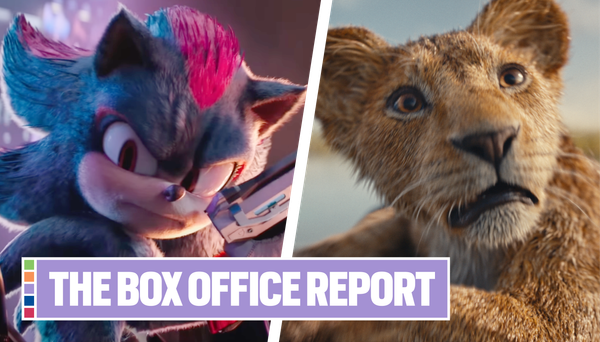Breaking down Bob Iger’s return as Disney CEO
How did the former CEO become the next CEO? What went wrong with Bob Chapek? PLUS: ‘Andor’ season finale, ‘Blade’ finds a new director, more ‘Indy’ news, and Bluey’s parents meet in real life.

Happy Thanksgiving! Thanks for spending it with Popculturology. (While you’re with your families, feel free to start plugging their emails into the subscribe box. It’s the least you can do for them, right?)
Before we jump into the newsletter, I wanted to share this video of Late Night writer Jenny Hagel addressing the mass shooting at Club Q in Colorado Springs during Monday night’s episode. I originally had it closing the newsletter, but it needs to be up here.
“There is something in America that desperately needs fixing.”

The entertainment news of the week is the return of Bob Iger as Walt Disney Company chief executive officer. The story broke late Sunday night, resulting in the first SPECIAL EDITION of Popculturology. As the week has progressed, we’ve learned a lot more about how and why Disney gave Bob Chapek the boot and turned to its former CEO again.
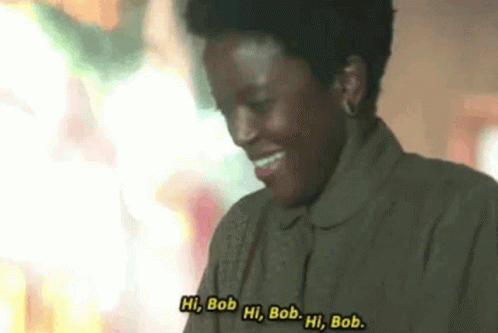
Why did Disney fire Chapek?
While Chapek assumed the role of CEO as the pandemic remade the media and entertainment landscape, closing theaters and theme parks, he still made many of errors of his own doing.
His handling of Black Widow led to Marvel Cinematic Universe star Scarlett Johansson suing Disney, prompting an ugly and public response from the company.
But creative gatekeepers both inside and outside Disney increasingly questioned whether he could manage relationships with key talent, an essential Hollywood skill, as well as his predecessor did, according to three entertainment business veterans who spoke on the condition of anonymity because they did not want to appear critical of a public figure. (The Washington Post)
Then there was Chapek’s response to Florida’s “Don’t Say Gay” bill. While Chapek originally remained silent on the issue, Iger opposed the bill, saying “To me, it wasn’t about politics. It is about what is right and what is wrong, and that just seemed wrong. It seemed potentially harmful to kids.”
Chapek also grappled with multiple public-relations challenges, such as changes to Florida’s education policy on LGBTQ discussions. As it tried to navigate the issue, Disney managed to anger people on both sides and eventually drew the ire of Florida Gov. Ron DeSantis (R). (The Washington Post)
Chapek also reorganized Disney, moving control of marketing and distribution from the company’s individual studios and centralizing that power under Kareem Daniel. Iger almost immediately began undoing that move, dismissing Daniel on Monday and saying the company was working “on the design of a new structure that puts more decision-making back in the hands of our creative teams and rationalizes costs.”
But within Hollywood and particularly Disney, Chapek’s most consequential move may have been a massive reorganization that essentially stripped marketing and distribution power from the executives at each creative unit and placed them with Kareem Daniel, a Chapek corporate deputy who worked apart from the divisions.
The move, which was questioned throughout Hollywood, was seen by the targeted executives as both an ego blow and a business limitation, according to two people at the company at the time who spoke on the condition of anonymity because they were not authorized to talk to the press. Disney said Monday that Daniel would be departing the company. (The Washington Post)
How long was Disney thinking of firing Chapek?
The movement to dismiss Chapek may have began over the summer after Chapek fired chairman of entertainment and programming Peter Rice. Responses to that move included: “Chapek just made another massive mistake,” “There are very few things that stun me. This stuns me,” and “It’s not good for the company. Morale is terrible.”
In the aftermath of Rice’s firing, Arnold released a supposedly unanimous statement of board “confidence and support” for Chapek. But many in the industry had noted that the board had yet to renew Chapek’s contract, which was set to expire in February 2023. Once again, top industry executives rolled their eyes. “You let the CEO get within a year of his contract being up,” one industry power player said at the time. “That by itself is a statement of non-support. A vote of confidence is nonsense.” (The Hollywood Reporter)
It seems that the recent quarterly earnings report and Chapek’s attitude toward it was the final straw.
It wasn’t just that some senior Disney leaders were aghast about the quarterly results and Mr. Chapek’s seemingly delusional delivery of them: Several began speaking openly about resigning if he remained, talk that swiftly reached the Disney board. Christine M. McCarthy, Disney’s well-regarded chief financial officer, directly told at least one board member that she lacked confidence in Mr. Chapek. “He irretrievably lost the room,” the leader of a Disney unit said on Monday. (The New York Times)
There was no love lost for Chapek when the time came to dismiss him.
When the end came for Chapek, even a Disney-connected source who is not a Chapek fan expressed shock at the way it went down. “He didn’t get to say goodbye or say, ‘I’ve decided to step down,’” this person says. Reminded of reports that Rice had likewise been unceremoniously dismissed following his own brief meeting with Chapek, this person adds, “I bet you it broke Chapek’s record of firing Rice in seven minutes. They called [Chapek] and said, ‘You’re out. Our lawyers will call your lawyers.’ No statement from him, no comment from him, no grace. It’s fucking insane.” (The Hollywood Reporter)
When did Disney make the decision to bring Iger back?
Last Friday appears to be the day Iger was officially asked to return, with board chair Susan Arnold making the call.
With investors fleeing Disney — its stock dropped 13 percent the day after the earnings report, the biggest decline since the Sept. 11 attacks — and Mr. Cramer of CNBC now openly calling for Mr. Chapek to be fired, the Disney board decided to push the panic button.
Susan Arnold, the board chair, called Mr. Iger, 71, at 3 p.m. on Friday and asked him to return. (The New York Times)
And once Iger and Disney had settled on terms, that was the immediate end for Chapek.
After reviewing options with her fellow directors, Arnold contacted Iger late last week and asked if he would consider returning to lead Disney. Over the weekend, they agreed to a contract that includes $27 million a year over the two years Iger’s in charge. Upon agreeing to the terms, the board dismissed Chapek, effective immediately. (Bloomberg)
Did Iger orchestrate Chapek’s firing and his own return?
Officially, no. Iger was not angling for his old job. But he didn’t think Chapek was doing well as CEO and wasn’t afraid to tell just about everyone.
Throughout it all, Iger’s disapproval of Chapek was a secret to no one. He is said to have warned at a board meeting in December 2021 in New York, just before he left the company, that the culture of Disney could be transformed negatively and rapidly. It was the last time he spoke to Chapek. (The Hollywood Reporter)
At public events over the past year — and in conversations with confidants as recently as this month — Mr. Iger repeatedly insisted that he had no intention of returning to Disney. At the same time, he had been privately railing against Mr. Chapek, according to several people who spoke with him. (The New York Times)
Few people in Disney circles (or even media circles) have the power that Iger has, even after he stepped away. With that level of power, it’s hard to not give the appearance that Iger orchestrated his return as CEO.
But there was also a contingent that wondered if Mr. Iger had helped engineer a coup. Doug Creutz, an analyst at Cowen, told his clients on Monday that the development “gives at least some appearance that Iger, and not the board, ultimately calls the shots at the company, and that Iger’s willingness to fully surrender power to a successor is low.” (The New York Times)
Who else was in the running to replace Chapek?
There was never a serious candidate other than Iger to replace Chapek. One of the issues with Iger’s achievements during his first tenure as Disney CEO was that his level of success made it hard for him to depart. The longer he stayed on as CEO, the more potential replacements wound up leaving the company for opportunities elsewhere.
Two previous candidates to succeed Mr. Iger, Thomas O. Staggs and Kevin Mayer, left Disney and are now running a start-up, Candle Media. A person close to Disney’s board had reached out to them this year with a hypothetical question: Would one or both be interested in returning to run Disney?
Mr. Staggs and Mr. Mayer demurred, according to two people familiar with the matter, adding that any deal would have required Disney to acquire Candle Media and needed Mr. Chapek’s approval, which he was unlikely to give. (The New York Times)
There was some talk of appointing an interim CEO while Disney searched for Chapek’s replacement.
Some on the board wanted to replace Chapek and appoint one of their own, Nike chairman Mark Parker, as interim CEO while conducting a search for a new permanent leader. But a source says Parker declined the role even as the idea arose more than once. Aside from Parker, these sources say, General Motors executive Mary Barra also advocated replacing Chapek at the June meeting. (Neither Parker nor Barra responded to requests for comment.) (The Hollywood Reporter)
What challenges await Iger now?
Oh boy, what challenges don’t await Iger? Streaming isn’t the hot ticket it was a few years ago and theaters are solely for tentpole franchise films.
Investors cheered the news, powering Disney stock up more than 6 percent on Monday. But the move is far from a sure thing. The business climate is very different from the one Iger left: The streaming market has cooled, the theatrical business is flirting with crisis, some of Disney’s big franchises are in flux, and an ever-worsening social polarization imperils Disney’s brand of broad apolitical entertainment where all can feel welcome.
“I think in the short-term, Iger returning as CEO is a safe move that should allow confidence among stakeholders and fans,” Josh Spiegel, an online commentator and leading expert on Disney, said in a message to The Washington Post. “The long-term plans are a lot hazier.” (The Washington Post)
ESPN has also become an issue for Disney, with Apple and Amazon jumping into the mix for rights to sports broadcasts.
A competitive frenzy has erupted around sports broadcasting rights, with Apple, Amazon and others driving up prices, which has hurt ESPN’s bottom line. Sports betting is viewed by some investors as the new streaming — a fast-growth master fix — but fully embracing that business could taint the family-friendly Disney brand. (The New York Times)
Iger once again finds himself searching for his successor too.
Part of Iger’s new mandate is to select a successor, the company said. Iger said in a statement that he was “extremely optimistic for the future of this great company.” (The Washington Post)
There’s also the theory that Iger may have one final trick up his sleeve.
Or maybe there’s a big, shiny, structural move in the works, which could either transform the company or make people think it has been transformed. Maybe there’s something else to buy — Netflix, for instance. (Note: “Disney or Apple or Someone Should Buy Netflix” is one of the media industry’s favorite narratives, no matter how big or small Netflix is at the moment. But also note Netflix founder Reed Hastings’s mash note to Iger on Twitter last night.) (Vox)
Remember the pre-Disney+ era? Back before Disney had its own streaming service, “Disney’s gonna buy Netflix” was a constant rumor. Sometimes that rumor would go even further and add “and then Netflix CEO Reed Hastings will succeed Iger as Disney CEO.”
Or is Disney the seller?
“He’s going to sell the company,” one Disney insider who has worked for Iger predicted. “This is the pinnacle deal for the ultimate dealmaker.”
Landing a deal with Apple (or some other megabuyer) would also cement Iger’s legacy. “I think he’d welcome it — he’d be the last CEO of Disney,” a former top Disney executive told TheWrap, noting that the two companies have “similar brand identities” and could benefit from a merger. (TheWrap)
Phew. Hopefully we’re all caught up now. It’ll be fascinating to see how the next few months (and two years) go at Disney with Iger.
Thanks for reading Popculturology. I love writing about pop culture, and I hope you enjoy reading this newsletter. If you do, please subscribe. It’s the easiest way to make sure you get every edition of Popculturology. And who doesn’t love an email that isn’t spam?

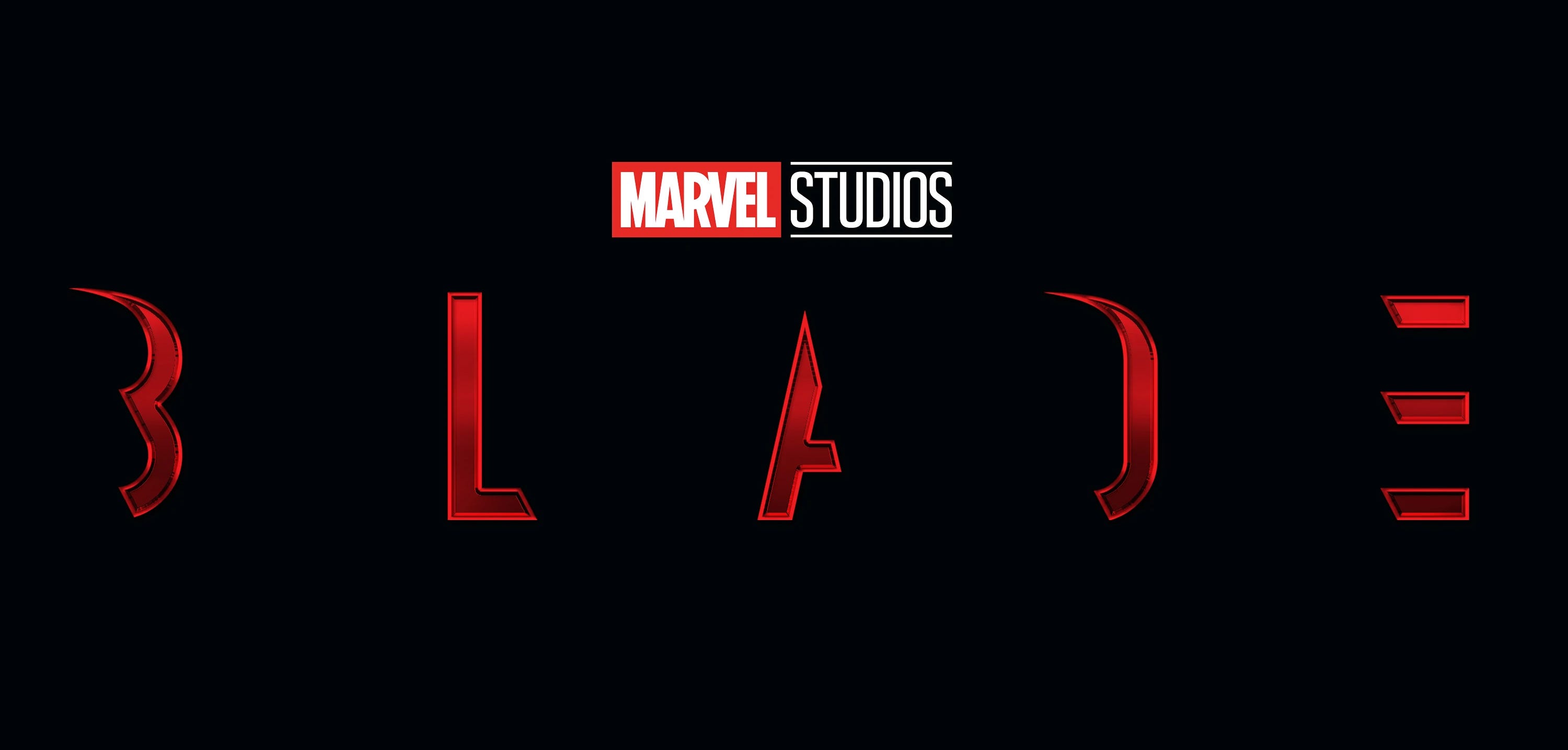
Blade finds a director
After Marvel Studios halted production on Blade after losing director Bassam Tariq, the studio has found not only a replacement to helm the film but also chosen a new writer for what’s being called “a page one rewrite for the project.”
Yann Demange will reportedly director Blade’s introduction to the Marvel Cinematic Universe. Demange directed the pilot episode of Lovecraft Country, the now-canceled HBO show starring Jonathan Majors.
Michael Starrbury will write a new script for the project.
According to The Hollywood Reporter, “the new intent is for Blade be to dark and gritty in tone, falling on the edgier side of Marvel fare.” Werewolf By Night recently opened up the horror side of the MCU, and there had been some chatter that composer-turned-director Michael Giacchino could replace Tariq as Blade director.
Mahershala Ali is still on board as Blade’s title character, and the film has been moved to the end of Phase Five with a release date of Sept. 6, 2024.

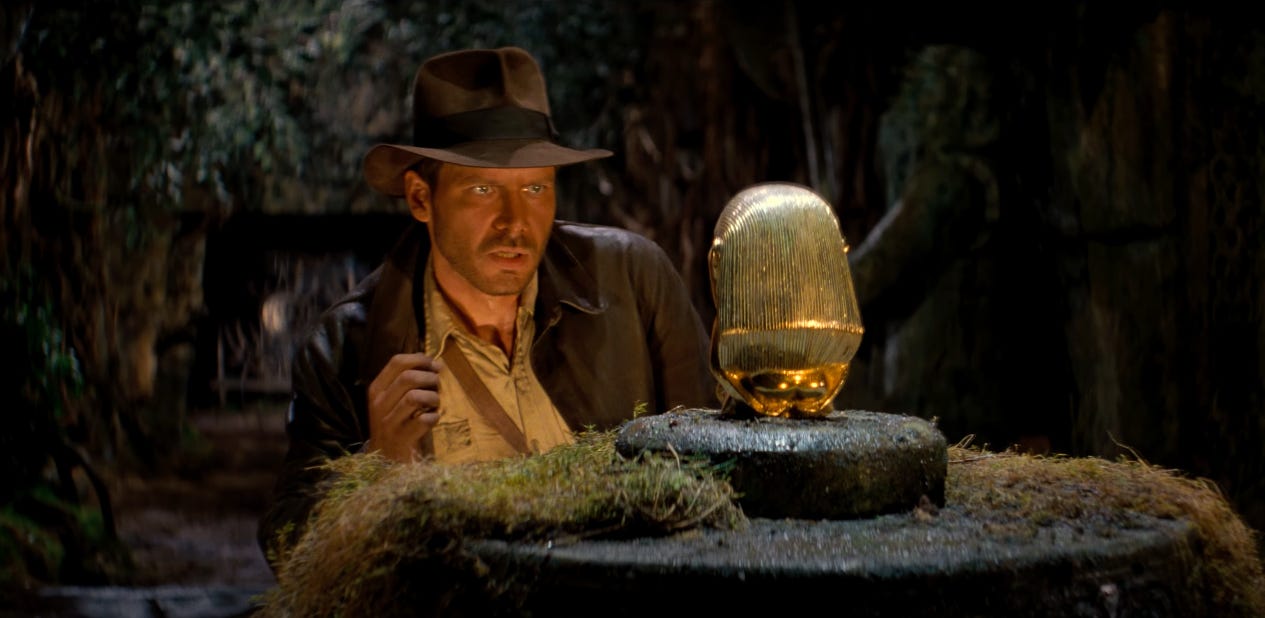
Harrison Ford de-aged for Indiana Jones 5
Disney has become pretty prolific when it comes to its de-aging technology. We saw it in small bites — Robert Downey Jr. at the beginning of Captain America: Civil War, Michael Douglas in Ant-Man — before the tech was applied in major ways — Samuel L. Jackson in Captain Marvel. (I’m honesty not sure where The Mandalorian’s Luke Skywalker falls in this equation. Is that de-aging or fully creating a new character through CGI and deepfakery?) There had been some rumors that we’d see a de-aged Harrison Ford in the next Indiana Jones film, and an Empire report has now confirmed that news.
“I wanted the chance to dive into this kind of full-on George-and-Steven old picture and give the audience an adrenaline blast,” [director James Mangold] tells Empire in our world-exclusive Indiana Jones 5 issue. The solution? A setpiece that dials the clock back to 1944, set in a castle swarming with Nazis. Through the miracle of de-ageing technology, we’re going back towards Raiders-era Indy. “And then we fall out, and you find yourself in 1969,” Mangold explains of the transition to the main action of the film. “So that the audience doesn’t experience the change between the ‘40s and ‘60s as an intellectual conceit, but literally experiences the buccaneering spirit of those early days … and then the beginning of now.”
A castle swarming with Nazis? Man, am I glad they realized that the best Indiana Jones villains are Nazis. Not weird cults or Soviets. Nazis. (I’m sure no one in 2022 will be offended by Nazis being the villains, either …)
“This is the first time I’ve seen it where I believe it,” Ford said to Empire. “It’s a little spooky. I don’t think I even want to know how it works, but it works.”
Like with Ford possibly playing a motion-capture character in the Marvel Cinematic Universe, I love — love — the idea that somewhere people had to explain to him that they needed to put little dots on his face or do a scan of his facial features for the de-aging process.
Empire also broke the news that Phoebe Waller-Bridge is playing Helena, Indy’s goddaughter. (There’s a good chance that you, like me, read that as “Indy’s granddaughter” and had some serious questions about what Shia LaBeouf’s character had been doing and when he started doing it.)
“She’s a mystery and a wonder,” Waller-Bridge told Empire, with director James Mangold adding that she’s “slippery, charming, the girl next door, a grifter.”


The art styles of Across the Spider-Verse
Spider-Man: Into the Spider-Verse was a groundbreaking film for animation, pushing the boundaries of the art form into new territory. Its sequel is going to push even farther.
Phil Lord and Christopher Miller revealed to Empire that Spider-Man: Across the Spider-Verse will feature six dominant art styles.
“The first film had one animation style that dominates the movie. This movie has six,” Lord told Empire. “So we’re taking those tools, adding all the things we learned on The Mitchells Vs The Machines, and then growing them further to accommodate the ambition of this movie. Which is to wow you every time you enter a new environment, and also to make sure that the style of the movie reflect the story, and that the images are driven by feelings, as opposed to some egg-headed art project. Which it also is, by the way!”

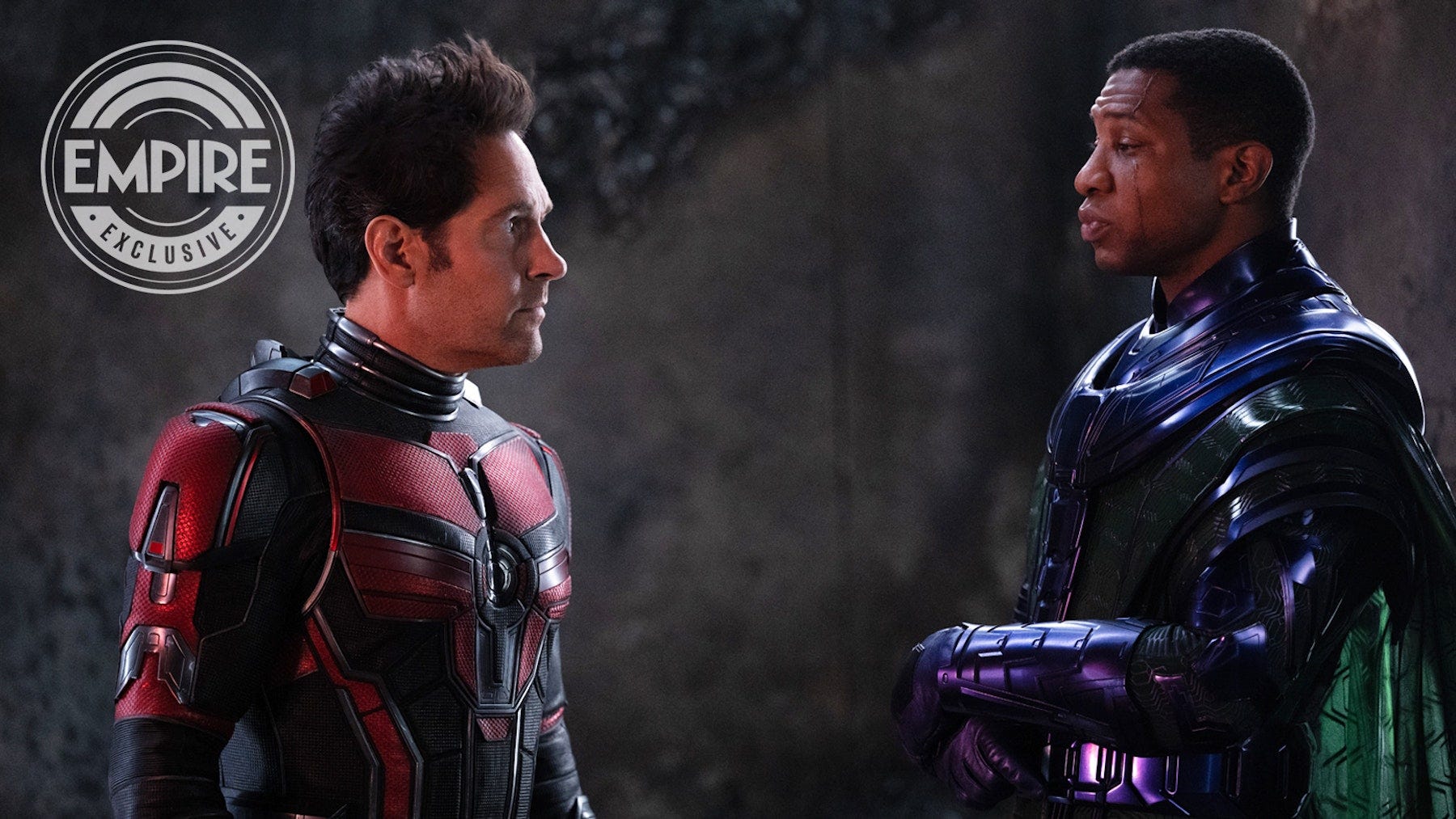
Quantumania director: Kang is a ‘absolute force of nature’
It’s easy to forget how many small miracles made the first decade of the Marvel Cinematic Universe possible. The casting of Downey as Tony Stark. The decision to toss him in a midcredits scene — in ANOTHER studio’s movie. The Avengers actually working. The Thanos credits scene that was originally nothing more than just an Easter egg.
That credits scene wound up guiding the first three phases of the MCU, creating the Infinity Saga with Thanos at its core. As Marvel figured out where the story was going, Thanos changed looks and changed actors. The character was fully redesigned for Avengers: Infinity War.
The Multiversal Saga has known who its villain would be since the moment Majors appeared in the Loki finale. Majors will finally appear as Kang (or one of the Kangs) in Ant-Man and the Wasp: Quantumania.
“Kang The Conqueror in our movie is a very different character,” Quantumania director Peyton Reed told Empire. “He’s someone who has dominion over time, and he’s a warrior and a strategist.”
Reed also highlighted Ant-Man getting a top-tier villain for his third film. “That’s interesting to me: to take the tiniest, and in some people’s minds weakest, Avenger, and put them up against this absolute force of nature.”

Apple lands rights to Michael Lewis’ crypto book
If Michael Lewis writes a book, someone is going to turn it into a movie. Moneyball, The Big Short and *checks notes* The Blind Side (huh, didn’t realize that was his) have already been adaption into films. The author’s next book about the cryptocurrency exchange FTX and its founder Sam Bankman-Fried has already attracted the entire of the studios, with The Hollywood Reporter breaking the news that Apple is nearing a deal to secure rights to it.
Unclear at this point if Apple will go the movie or television series route with Lewis’ FTX project.
What’s on your mind? Leave a comment to let Popculturology know your thoughts on pop culture.

Avatar: The Way of Water
Yup, this sure looks like an Avatar trailer.
*looks closer*
Huh, there appears to be a second shade of blue people now. I wonder what their deal will be.

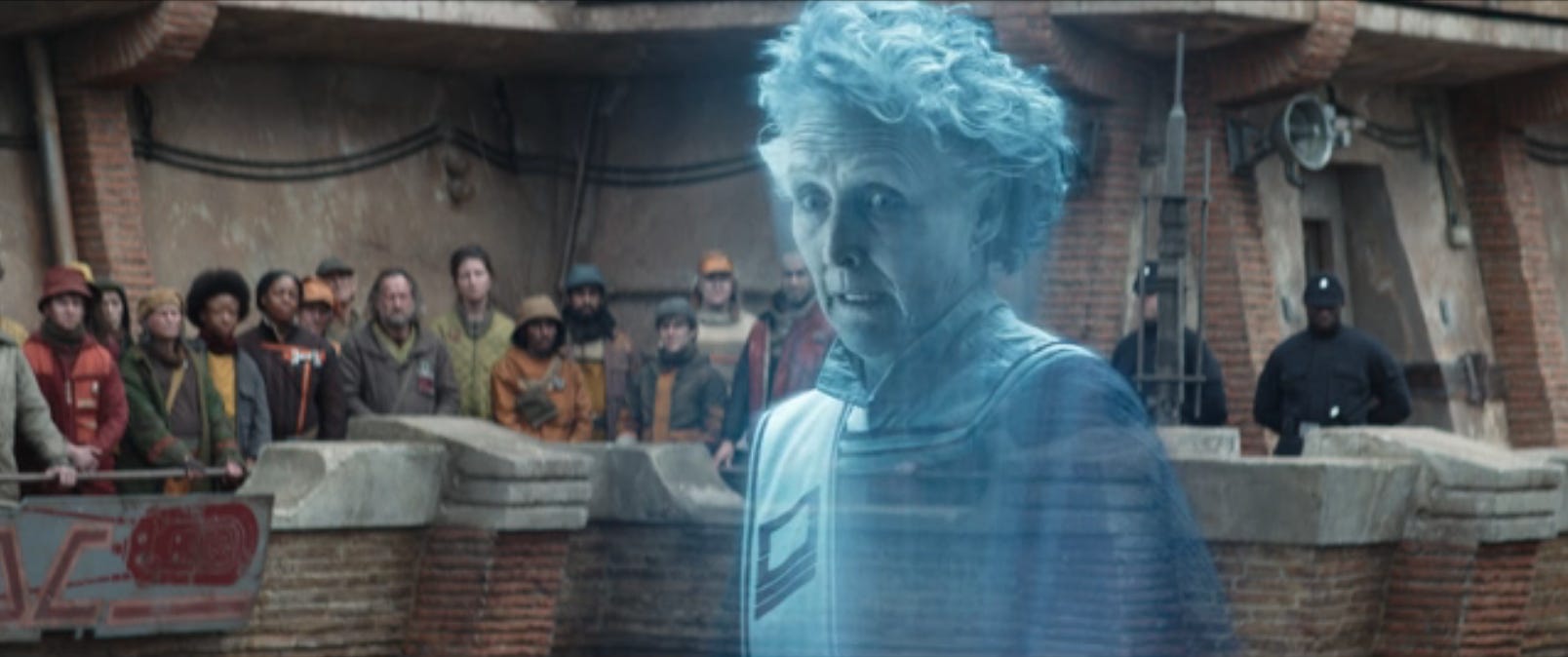
Andor
There’s no way to discuss the season finale of Andor without spoilers, so spoilers going forward. Skip ahead to the next piece to avoid them.
Best live-action Star Wars show. Best Star Wars show. Best show on television.
Congrats to Tony Gilroy, Diego Luna and everyone else involved with making this miracle of project a reality. When Andor was first rumored, it seemed like an afterthought. How could it compete with The Mandalorian or any of the other project featuring the Skywalkers or Jedi or other legacy characters?
Turns out that was the trick. To tell a new story — a human story — Andor had to put all of that aside.
Rogue One, the seed that sprouted into Andor, came close to accomplishing this feat until Darth Vader showed up in its final moments. But, yeah, Andor went twelve episodes without falling to this constant temptation.
There are so many moments from Andor’s first season that I could easily run in a block quote and ask: “How did this writing end up in a Star Wars TV show?” Luthen’s speech in “No Way Out” is an all-timer. Nemik’s manifesto playing over the opening scenes of this episode had my full attention. But I’m going to go with Fiona Shaw’s outstanding delivery of Maarva Andor’s farewell speech.
“But we were sleeping. I’ve been sleeping. I’ve been turning away from a truth I wanted not to face. There is a wound that won’t heal at the center of the galaxy. There is a darkness reaching like rust into everything around us. We let it grow, and now it’s here. It’s here, and it’s not visiting anymore. It wants to stay. The Empire is a disease that thrives in darkness. It is never more alive than when we sleep. It’s easy for the dead to tell you to fight, and maybe it’s true, maybe fighting’s useless. Perhaps it’s too late. But I’ll tell you this. If I could do it again, I’d wake up early and be fighting these bastards from the start. Fight the Empire.”
I audibly gasped when B2EMO was kicked over as Maarva’s speech ended. No one hurts B2EMO.
Maarva’s speech was the spark that led to one of the most brutal series of scenes we’ve ever seen in a Star Wars story. Turns out the police brutality we saw early on in Andor was only the tip of the iceberg.
“Kill me or take me in.”
Cassian’s final words of the season — and the smirk Luthen responds with — finalize the character’s transformation from hired gun to rebel.
“It’s a blood oath. I’m in. This question is resolved if we go forward,” Gilroy told Vulture. “Those Stations of the Cross Cassian marched through during the first 12 episodes, there’s no turning back from that. The issue we will not examine in Season Two is his commitment to the Rebellion. It will be about many other things.”
Now we wait until Season 2 arrives … in 2024.
But, wait! There’s a credits scene!
Yes, Andor’s season finale has a credits scene. And it’s quite the reveal: Those parts Cassian and the rest of the prisoners on Narkina 5 were building? They’re parts of the Death Star’s superlaser.
“What’s cool about it is not just that it’s an Easter egg and it’s fun and the rest of it. The cool thing for us was, ‘Oh my god, Cassian is building something that he’ll never know what it was, but he’s actually been building the thing that’s going to kill him,’” Gilroy told Fandom. “So there is some element of synchronicity and destiny that’s pulling together for him.”
Back before we knew the plot of Solo, I jokingly pitched the idea that Han Solo should’ve been smuggling the Death Star’s kyber crystal without ever knowing what it was or what it was for.

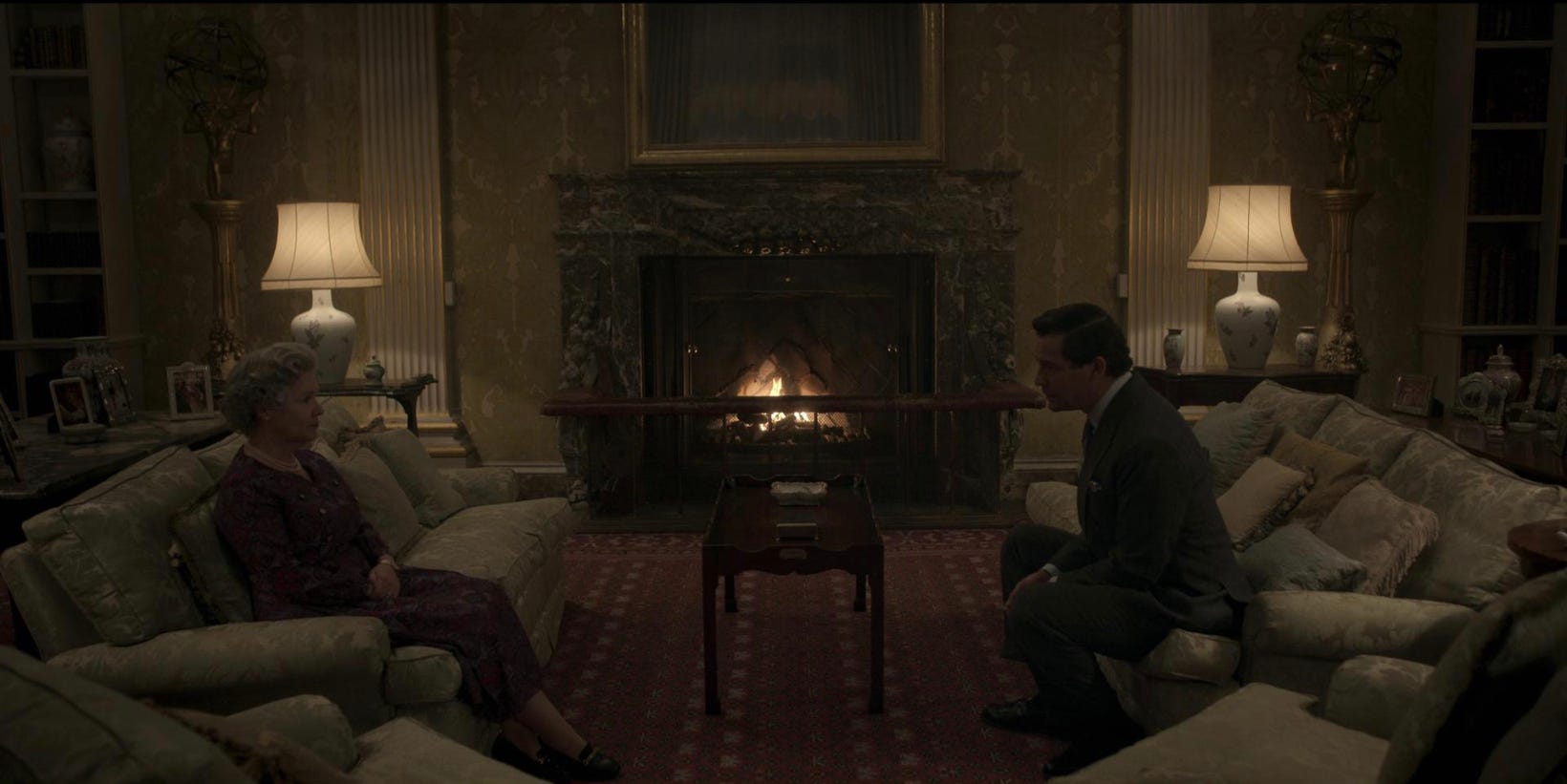
The Crown
We wrapped up the final two episodes of The Crown’s fifth season earlier this week. A couple of downer episodes, huh? Marriages collapsing, boats being decommissioned, the realization that all the optimism of the 1990s toward freedom and democracy was horribly misplaced and would only set the world up for a backslide into darkness thirty years later.
“My popularity has transferred to William, who everyone would rather see as king than you,” is a pretty devastating comeback from Diana when pushed by Charles in regards to Camilla Parker Bowles.
I also couldn’t have been the only one hoping for a “That’ll do, boat” from Queen Elizabeth II as she visited Britannia one final time. At least she’ll have her Big Mouth Billy Bass toy to occupy herself with.
Bob’s Burgers
I’m behind on the latest season of Bob’s Burgers, but we put on the new Thanksgiving episode last night because, well, it’s Thanksgiving — and this show really shines when it comes to this holiday.
Thanksgiving aside, a family minigolf outing really struck a cord with me. The tiny pencils, some family members trying to move on to the next hole, the passive aggressiveness of asking for scores when you’ve been keeping track of just how many penalty strokes need to be applied. I still have scorecards from past vacation minigolf nights in my desk.

- The Mist at 15: An oral history of Frank Darabont's gut-wrenching Stephen King adaptation (Eric Vespe, Slashfilm)
- Twitter is being destroyed by one of its worst main characters (Alyssa Bereznak, The Ringer)
- Are Ticketmaster’s days numbered? (Jordan Uhl, I Hate It Here And Never Want To Leave)
- How I got smart (Amy Schneider, Defector)
Spread the news! Share Popculturology with your friends.

The voices of Bingo and Chilli meet for the first time
Dave McCormack and Melanie Zanetti were on The Tonight Show on Monday to promote the Bluey balloon making its debut in this year’s Macy’s Thanksgiving Day Parade. Turns out the voices of Bandit and Chilli Heeler only just met in real life a few days before this segment.
It is pretty on point for the voice of Chilli to be dressed up for this appearance while Bandit’s voice wore a flannel shirt.

The Making of The Rings of Power
One of the coolest parts of the original Lord of the Rings trilogy was seeing how Peter Jackson made the whole thing work. The camera tricks, the miniatures, the careful use of CGI. (Can’t really say this about the Hobbit trilogy …)
The Lord of the Rings: The Rings of Power gets that treatment next.
Prime Video’s record-breaking global hit series The Lord of the Rings: The Rings of Power has announced that “The Making of The Rings of Power” — a special look at previously unreleased behind-the-scenes content from Season One’s eight episodes — is now available exclusively on X-Ray, via a full-screen experience that can be launched anytime while watching the series. Viewers can also access the X-Ray episodes by scrolling to the Bonus Content section on the series’ main page on Prime Video HERE.
It looks like each of the first season’s eight episodes get a five- or six-minute “making of” segment. Not quite the hours and hours of bonus footage the Lord of the Rings DVDs were known for, but something to hold us off as we wait a few years for the second season of Rings of Power.

Joe Robert Cole discusses how Wakanda Forever evolved
After Chadwick Boseman’s passing, plans for the Black Panther sequel had to change. Black Panther: Wakanda Forever co-writer Joe Robert Cole talked with Rolling Stone about how those plans evolved. (There are going to be some Wakanda Forever spoilers coming up. If you haven’t seen the movie yet, skip ahead to the next item.)
Cole’s biggest reveal was that T’Challa was always going to have a child. “Him having a child was always in the DNA of what we wanted to do,” Cole told Rolling Stone. “We just weren’t sure, after he passed, about the best way to incorporate him. So there were various iterations of his son being in our new story. And we finally landed on the reveal at the end.”
“[In] a previous iteration, we really were more child-focused in the narrative, and his son was a part of that,” Cole continued. “Obviously that changed, but we wanted him to exist in the film in some way. It was much more reduced.”
While Cole says there’s a “natural organicness” to Shuri becoming the next Black Panther, they did explore other characters assuming the mantle, including M’Baku (“M’Baku certainly was someone that got kicked around a little bit”) and Nakia (“That got kicked around! Her name got kicked around for sure.”).
When asked if talks have begun for a third Black Panther movie, Cole pretty much said no. “This one was a journey,” he told Rolling Stone. “So I think everybody’s excited for the film to be out there. And that’s as far as we’ve gone.”
That’s the end of this issue of Popculturology. Thanks for reading. If you don’t already subscribe, please hit the “subscribe now” button.


